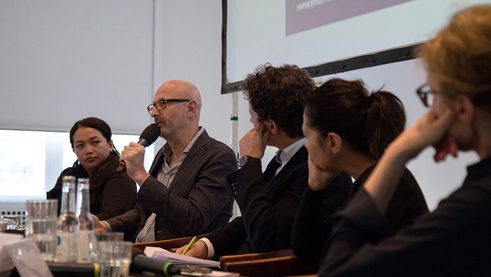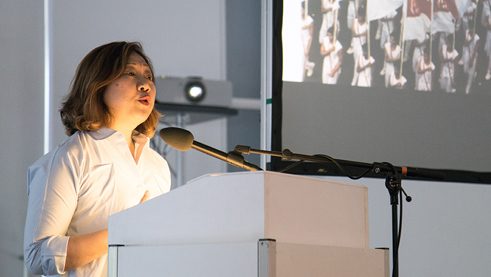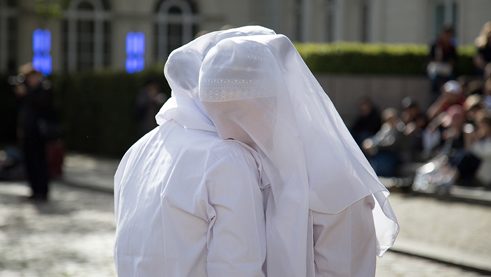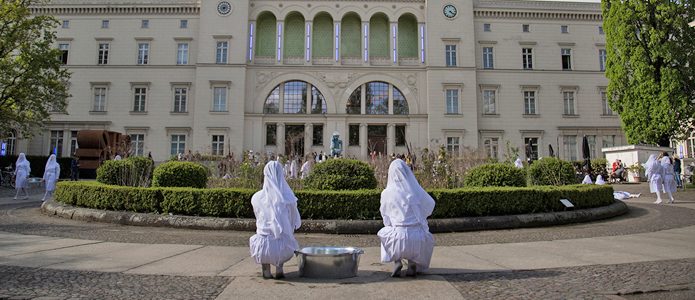European and Southeast Asian curators and museum directors met in Berlin on the invitation of the Goethe-Institut Jakarta. In a panel discussion, they exchanged views on the changes in exhibition practices.
Three panels, each with four for questioning, each of whom had a little more than five minutes to present their institution, their working methodology, then a brief debate and it was the next contributor’s turn. Although there was little opportunity for broader debates and inquiries, those who wanted to learn something about museums, exhibition halls or private galleries from Southeast Asia and New Zealand really got their money’s worth. The director of the Maori Cultural Center at the National Museum there, Puawai Cairns, also pointed out with a twinkle in her eye that the Maori had originally come from Southeast Asia.
 Panel discussion at the symposium
| Photo: Marcel Runge
Panel discussion at the symposium
| Photo: Marcel Runge
Almost as old as the Louvre
Symposium participants were observed hastily filling three or four pads with dense writing, there was so much information to take in. For example that the value of the Dutch trading company VOC far outstripped that of Apple; in Thailand, when choosing materials sent in by the public, care must be taken to ensure that moral sentiments are not violated; when Imelda Marcos’s legendary shoe collection is on the agenda, an exhibition in Manila has to expect protests from the family; the National Museum in Jakarta is almost as old as the Louvre and much older than the Berlin museums.
Many of the museums in Southeast Asia have similar histories of origin. They were created by European colonial powers, were part of their power apparatus, but also of that very European curiosity about the world, which, among all the legitimate post-colonial rage, is often perceived as far too little than something special. Participation by museum historians who could have classified these institutions in a broader context would have been good. Then it would also have become clearer that the construction of a homogenous national past, as apparently at the National Museum in Phnom Penh, is by no means exceptional, in contrast to the construction of a past of the diverse, as at the National Gallery in Singapore, certainly one of the most significant new museums of recent years. From British colonial art to socialist realism to the international avant-garde, it paints a broad panorama of the Singaporean.
 Curator Chor Lin Lee
| Photo: Marcel Runge
Curator Chor Lin Lee
| Photo: Marcel Runge
The public perspective
But what about the music, the festivals and rituals, the dance, the movement? And what role does the public play in this presentation of “high art,” which ultimately follows Western European models, and how can they bring in their stories and perspectives? Curator Chor Lin Lee from Singapore emphasised this when, using the example of the National Museum, she described the parallelism of the official images of history shown in many magnificent dioramas with the image from below, told by women and minorities.
 The performance Sweet Dreams Sweet right after the symposium
| Photo: Marcel Runge
The performance Sweet Dreams Sweet right after the symposium
| Photo: Marcel Runge
As with many symposia, this exciting event also chiefly left participants with new questions: How should the former colonisers be integrated into the museum-scape? For Puawai Cairns, the question was illogical, because immigrants from Europe to New Zealand have dominated the institutions until today. Her task instead is to give the diverse cultures of the Maori the opportunity to express themselves. The museum serves, so to speak, as a sounding board.
Nikolaus Bernau is a journalist who writes about art and architecture.
